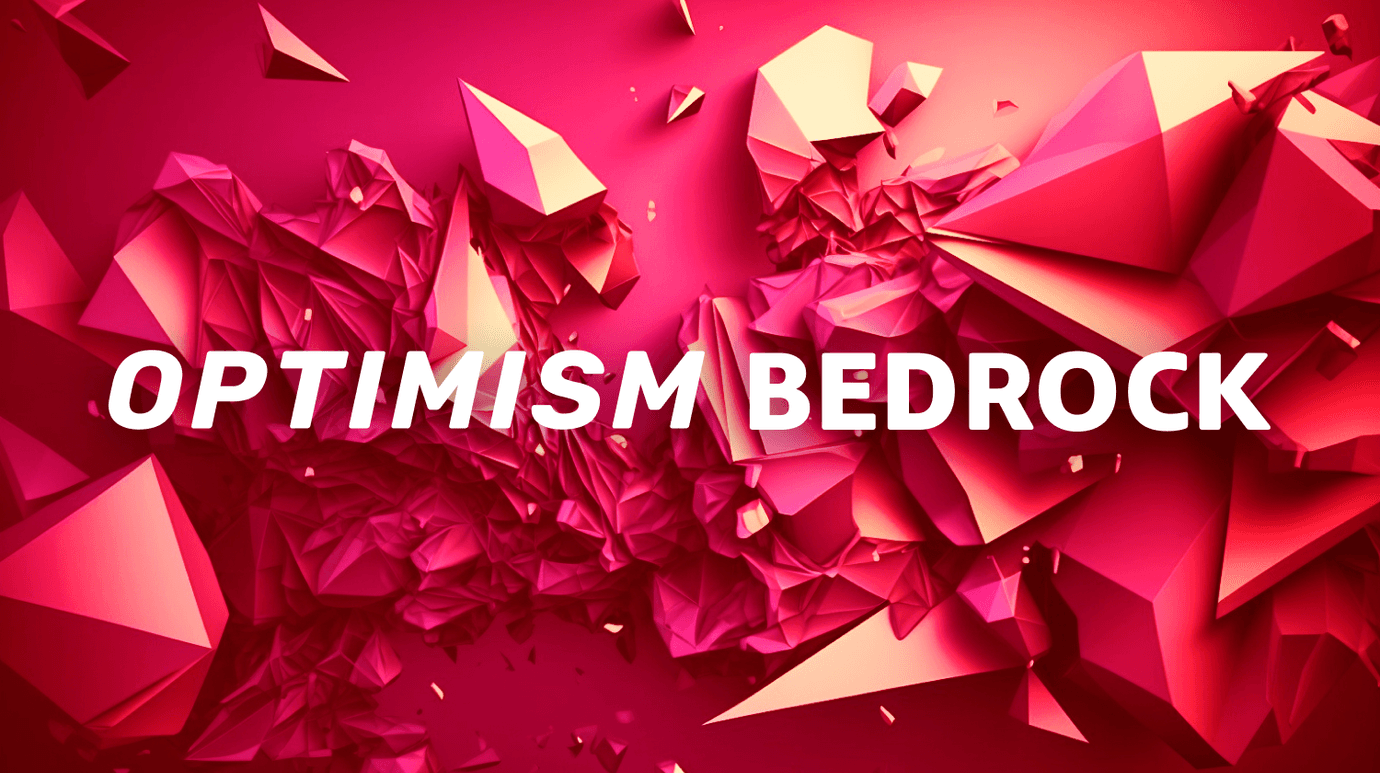Optimism's Bedrock Hard Fork: Is it The Future of Ethereum Scaling?

Explore the groundbreaking Optimism Bedrock hard fork, its impact on Ethereum scaling, and how it's paving the way for a more efficient, multi-chain future.
Ethereum scaling solution, Optimism, has recently unveiled its most significant update, the Bedrock hard fork, set to roll out on June 6th. This upgrade aims to push the boundaries of what we have come to expect from layer 2 solutions by delivering unparalleled performance and functionality, putting it one step closer to Ethereum equivalence.
The Bedrock Upgrade: What it Means
Optimism's Bedrock upgrade heralds a new era of modularity and simplicity, streamlining the architecture of the OP stack into separate consensus, execution, and settlement components. By transforming Ethereum execution clients into Optimism execution clients, the upgrade paves the way for heightened efficiency across the board.
One of the most noteworthy aspects of the Bedrock upgrade is the introduction of a two-phase withdrawal process. This addition prioritizes bridge security, which has been recognized as a principal risk factor for chains in recent years.
Performance Improvements and Impact
The Optimism Foundation has high expectations for the Bedrock upgrade, with predictions suggesting transaction costs, throughput characteristics, and sync speeds will all see major improvements. While the exact impact can only be evaluated post-deployment, it's anticipated that protocol costs and security fees could drop by a staggering 47%.
However, it's essential to note that the upgrade process will require some downtime, with deposits and sequencer transaction ingestion on pause for an estimated two to four hours.
Partnerships, Performance, and Market Competition
Optimism may be a new player in the crowded Ethereum scaling solutions market, but it's already carved out a solid niche. Partnerships with big players like Coinbase and venture capital firm Andreessen Horowitz (a16z) have propelled the network's growth.
Moreover, the value of Optimism's native token, OP, has soared in 2023, gaining 77%, a performance outstripping Ethereum's native token, Ether (ETH), which has risen by 52%.
Preparing for Upgrade: The Process
The timeline leading up to the Bedrock upgrade was meticulously planned. Rather than setting a concrete date, the Optimism Foundation set rigorous go-live criteria, including successful testnet upgrades, follow-up audits, internal rehearsals of migration and recovery processes, and a stable testnet period. Once these criteria were met, a public announcement was made, giving the community three weeks' notice.
While the upgrade may impact some application developers, the Optimism Foundation has been proactive, keeping partners and the developer community informed and providing thorough documentation to help prepare for the changes.
The launch of the Bedrock upgrade represents a landmark moment in the journey towards a multi-chain future. As Ethereum continues to scale and innovate, layer 2 solutions like Optimism become more crucial than ever. Their ability to provide a smoother, more efficient blockchain experience is fundamental to Ethereum's long-term success and adoption.
Final Words
With Bedrock, Optimism is not only improving its own performance and functionality, but also contributing to the evolution of the wider Ethereum ecosystem. The upgrade is a statement of intent, marking Optimism's determination to stay at the forefront of Ethereum scaling solutions.
The Bedrock hard fork is undoubtedly a game-changer, promising an exciting new chapter in Ethereum scaling. As we look ahead to its deployment, the anticipation is palpable. The only question that remains is, are you ready for what's coming next?


